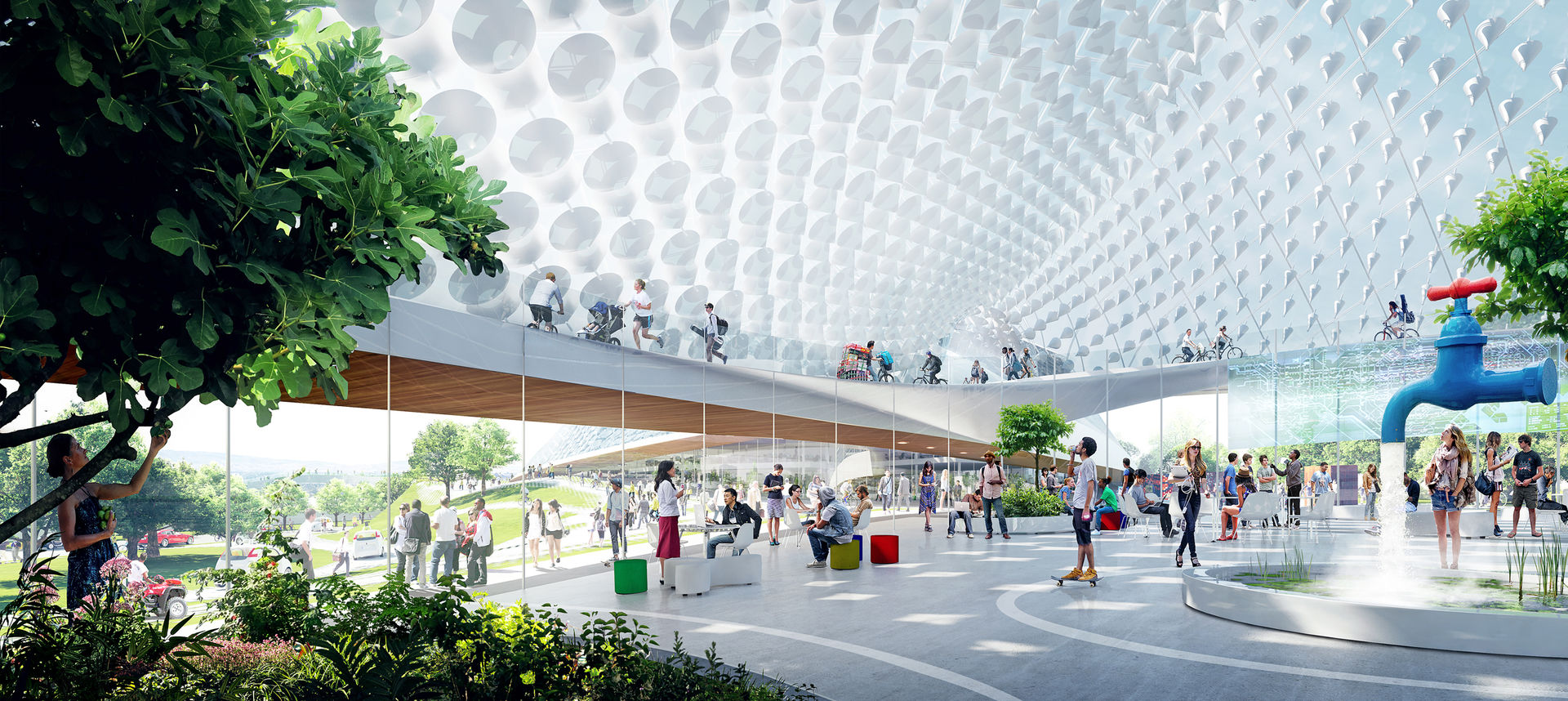New relevance of central zones
By Wojciech Czaja, 25. März 2018

What can be done with the underexposed area in the centre of the office? More options are becoming available, at least in theory. In practice, however, employers are afraid of too much comfort and too little efficiency. Studies prove the opposite: an attractively designed central zone with recreational areas and spaces for letting off steam is a win-win situation for all.
Money is not to be trifled with. Especially not large sums of money. A few weeks ago the new headquarters of the European Central Bank were opened in Frankfurt am Main. As was to be expected, the ECB tower planned by Coop Himmelb(l)au has an austere appearance from both the interior and the exterior. The offices, which have glazed windows onto the corridor, are grey throughout, with grey carpet, grey window profiles and a silver-grey anodised ceiling. Even the office furniture, the colour of euro coins, with which the 2,600 workstations were equipped offers little prospect of a colourful daily routine. But then comes the great surprise: the employees’ tea kitchens are ablaze with jazzy colours – baby blue, psychedelically shimmering yellow and bilious green, and many other shades for which there are no words in the dictionary. The atria too, the suspended platforms which connect the two halves of the tower every 40 or 50 metres, are a mixture of airy and sophisticated by contrast with the standard office cubicles.
The ECB tower in the East End of Frankfurt is proof that the central zone has become an integral part of everyday office life.
Playground middle zone
“In Austria too, creative central zone design is becoming more and more popular,” says Bernhard Kern, CEO of Roomware Consulting GmbH, in an interview with contact. “It is primarily companies in the IT sector and it is new approaches such as Design Thinking and Scrum which drive development forwards.” Kern expects the central zone to gain in significance as a place of informal communication, but also of personal retreat in between times. The variety of design options is enormous, ranging from individual and group spaces to cosy lounges, kitchens and bars and even unusual, playful zones with table football and table tennis as well as so called silent rooms. Temporary, flexible workstations for field staff are especially well suited to the central zone. “Office design, particularly in open space areas, shouldn’t just be seen as the aggregate of the workstations it contains,” according to Kern. “If you want to position yourself on the market as an attractive employer by providing your staff with a pleasant environment, you have to offer appealing alternatives to the most efficient use of office space.” The expert suggests constructing one individualised element for every 20 employees. The greater the choice of different time-out places in the office the better.
Middle zones as a guarantee of quality and satisfaction
Particularly daring examples are the central zone designs at Google, Apple, Facebook, Microsoft, eBay, Amazon and Airbnb – pictures of them are known from the media. Gondolas hang from the ceiling, oldfashioned sofas like those in grandma’s living room stand around, you sometimes feel yourself catapulted into another universe. But even more traditional, more conservative companies have already discovered the central zone as a guarantee of quality and satisfaction. The Tyrolese BTV bank, the German Deka-Bank and the Dutch national railway company Nederlandse Spoorwegen provide so-called AlphaSphere couches for their staff. This high-tech couch, designed by Austrian design studio sha., with its lighting and sound effects and vibrations, creates a state of weightlessness of the body. With success: since staff have had the option of taking a 30-minute nap in this way during their lunch breaks errors and poor concentration have been significantly reduced. “These are all wonderful flagship projects,” says Bernhard Herzog, Head of Research at M.O.O.CON GmbH. “My experience shows, however, that most organisations are unfortunately not yet all that open forthis topic. They’re afraid that ultimately no sensible results will be achieved, although numerous studies demonstrate that the best ideas are conceived precisely where there is variety in everyday working life, where there is an opportunity to switch off and occasionally do something completely different from time to time.”
“The most important thing is for the space on offer to fit in with the firm’s philosophy and the company culture,” according to Herzog. In the best case scenario the central zone creates a win-win situation for everyone.
“An attractive central zone design is not only a symbol showing that staff are appreciated, but is also a valuable place of meeting and communication,” says ViViennese industrial psychologist Bettina Wegleiter. “It is here that people meet one another and exchange views at a personal level, it is here that conflicts within the team can be resolved in the easiest possible manner.”
(c) Fotocredit: Heatherwick Studio and BIG: geplanter Google Campus in Mountain View (Silicon Valley)




